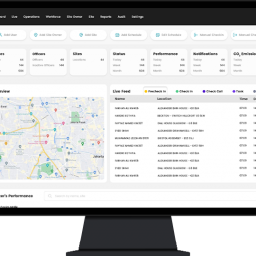When it comes to hiring great talent, we want to believe that we give everyone a fair shot and select the best applicants. But what if our assessments aren’t as objective as we believe?
We all have unconscious biases, both positive and negative, that shape how we perceive people. When we recognize a piece of ourselves in someone else, we are more likely to like them. When we regard people as being different from ourselves, we can be quick to judge.
This prejudice can be especially damaging during the employment process, preventing diverse candidates from rising up the pipeline. When managers pick individuals who are similar to themselves subconsciously, teams quickly become homogeneous. Fortunately, there is a way to end the pattern. These are some strategies for reducing unconscious bias in your own hiring process.
1. Create Gender-Neutral Job Descriptions
Are your job descriptions scaring off qualified candidates? Some words and phrases can be perceived as feminine or masculine, discouraging applicants from applying. Examine job descriptions for skewed terminology and replace them with more gender-neutral wording. Phrases like “disciplined” and “tackle” may deter female applications, whereas terms like “our family” and “empathetic” may see an increase in female applicants. Being conscious of your word choice from the start can help you recruit a more diversified talent pool.
2. Review Resumes Blind
According to studies, resumes with white-sounding names obtain more callbacks or interviews than those with non-white-sounding names, prompting many candidates to “whiten” their names and backgrounds. But why should a candidate’s name determine whether or not he or she is qualified for an open position? To eliminate unconscious bias, you may be able to employ application tracking software to remove names and hide demographic information during the resume screening process.
3. Train Employees on Hiring Bias
You can’t solve a problem you don’t know about. We are more biased than we realize, but many of us are unaware of how we are biased against others. The Implicit Project at Harvard Business School is an eye-opening exercise that might help people discover and assess their biases. Before you begin training, have participants complete a few surveys to learn about any social prejudices they may have.
Finally, as part of your training program, challenge your employees’ assumptions. You can develop your own internal training program, engage a consultant, or use online tools such as Google’s unconscious bias training.
4. Diversify Recruitment Panels
Putting together an interview panel is one of the simplest methods to incorporate varied viewpoints into your hiring process. When recruiting managers have sole authority over hiring decisions, they may overlook a qualified candidate in favor of someone more like them. A recruitment panel allows more people to provide comments on applications and aids in avoiding unconscious bias while choosing the best candidate for the job.
5. Standardize Interview Questions
Standardizing interview questions ensures that all candidates have a consistent and fair experience. Applicants should be asked the same questions and given the same opportunity to demonstrate their qualifications whether they apply through a job advertising site or are personally referred by the CEO.
Finally, remind staff to refrain from asking inquiries that may lead to a candidate disclosing his or her age, religious affiliation, or sexual orientation. This information has nothing to do with a candidate’s capacity to perform in the role and may sway hiring decisions. If the candidate volunteers the information, encourage your interviewers to move the subject elsewhere and discourage them from discussing the information with the rest of the panel so that others’ feedback is not influenced.
6. Incorporate Employee Resource Groups
Include employee resource groups (ERGs) into on-site interviews to make diverse candidates feel more at ease. When inviting applicants on-site, discuss the ERGs you have and ask if they want to meet with a representative from any of the groups. Candidates will benefit greatly from having an ERG representative greet them at the front entrance. They can ask questions, learn more about ERGs, and meet another employee who shares a similar interest or history.
Several firms are dedicating more time and effort to hiring diverse teams, but there is still more work to be done. According to Namely’s Workplace Diversity Report 2018, the “similar-to-me” prejudice has resulted in a significantly increased frequency of employees reporting to supervisors of the same ethnicity and/or gender.

















